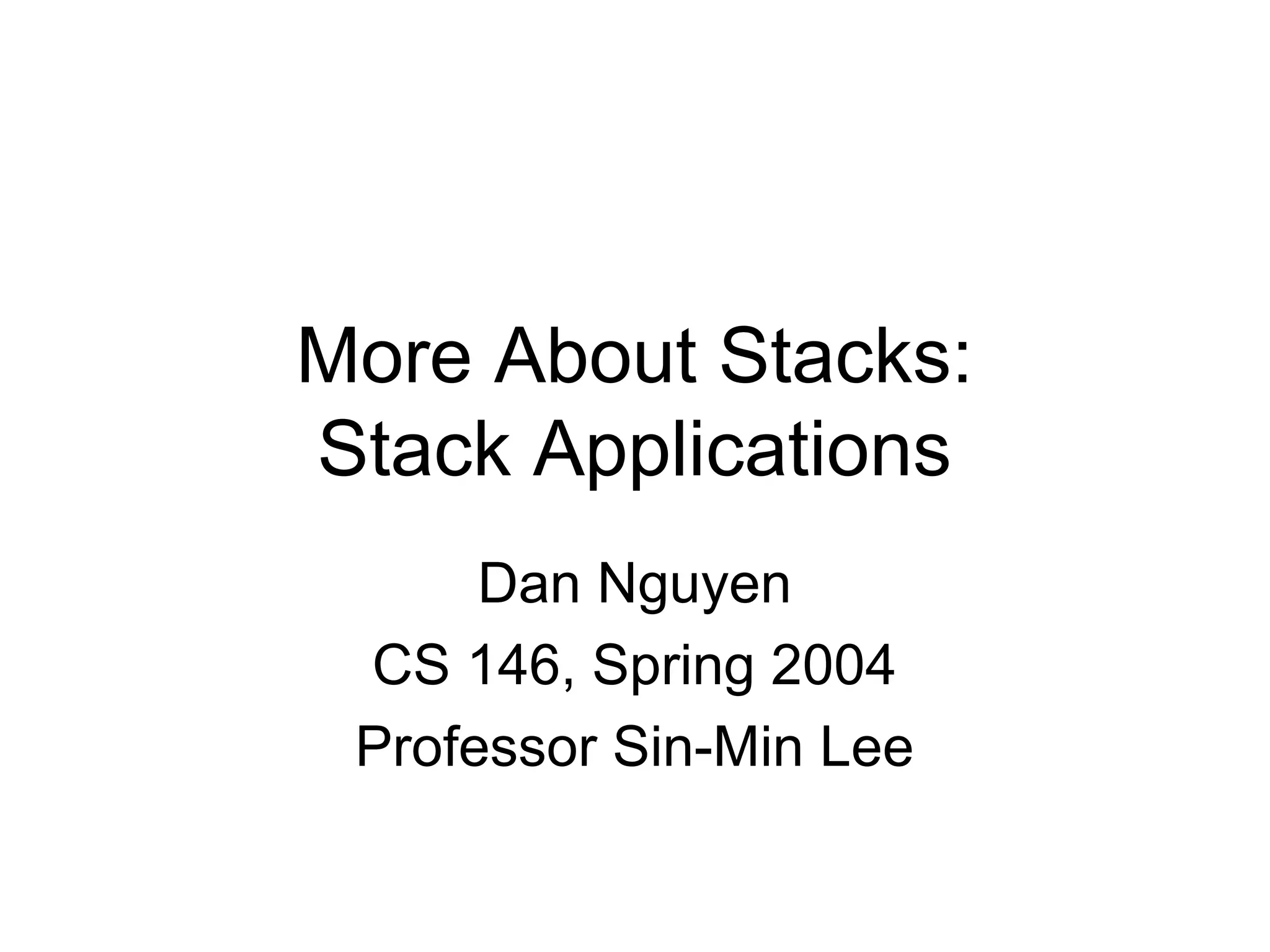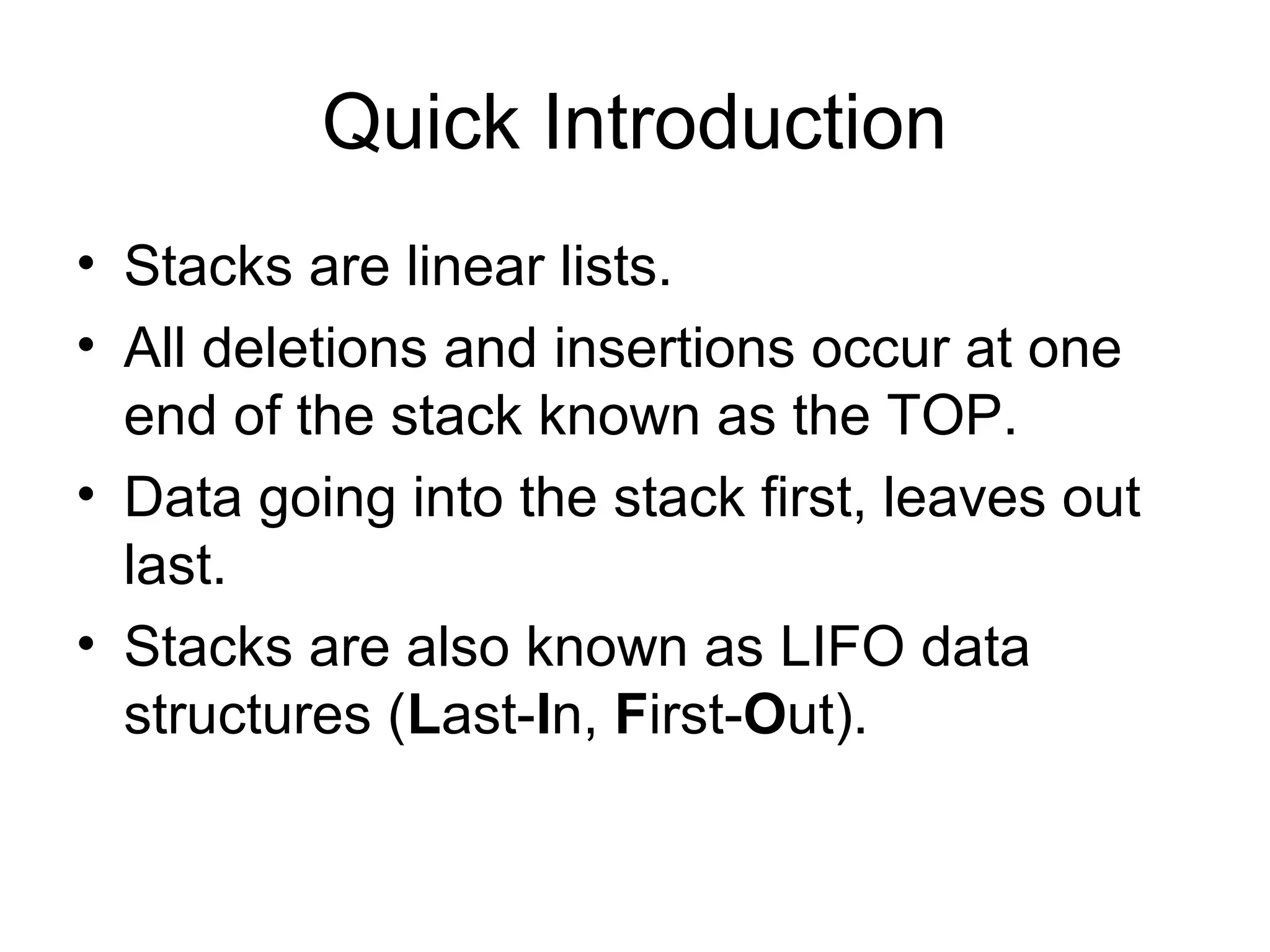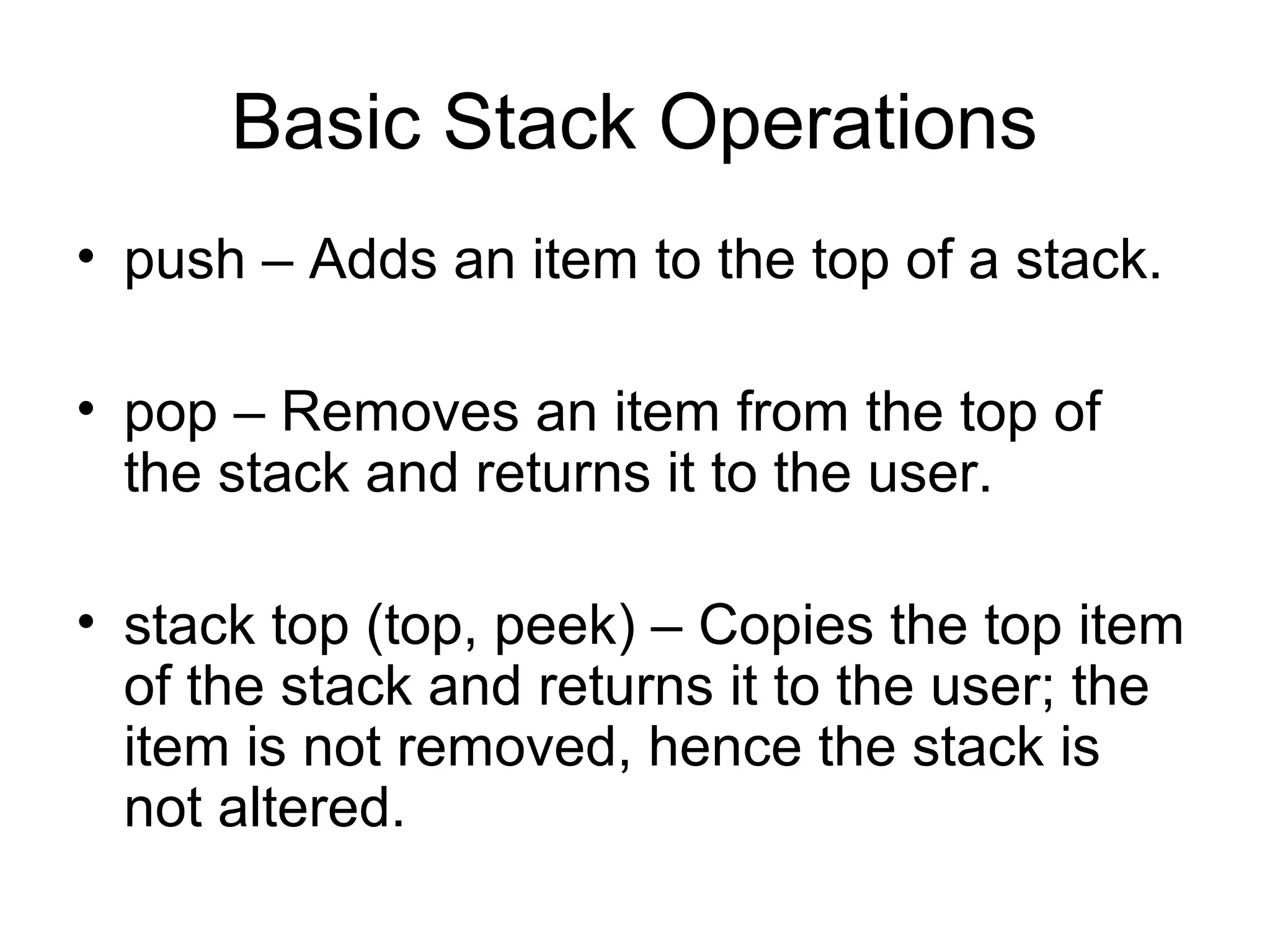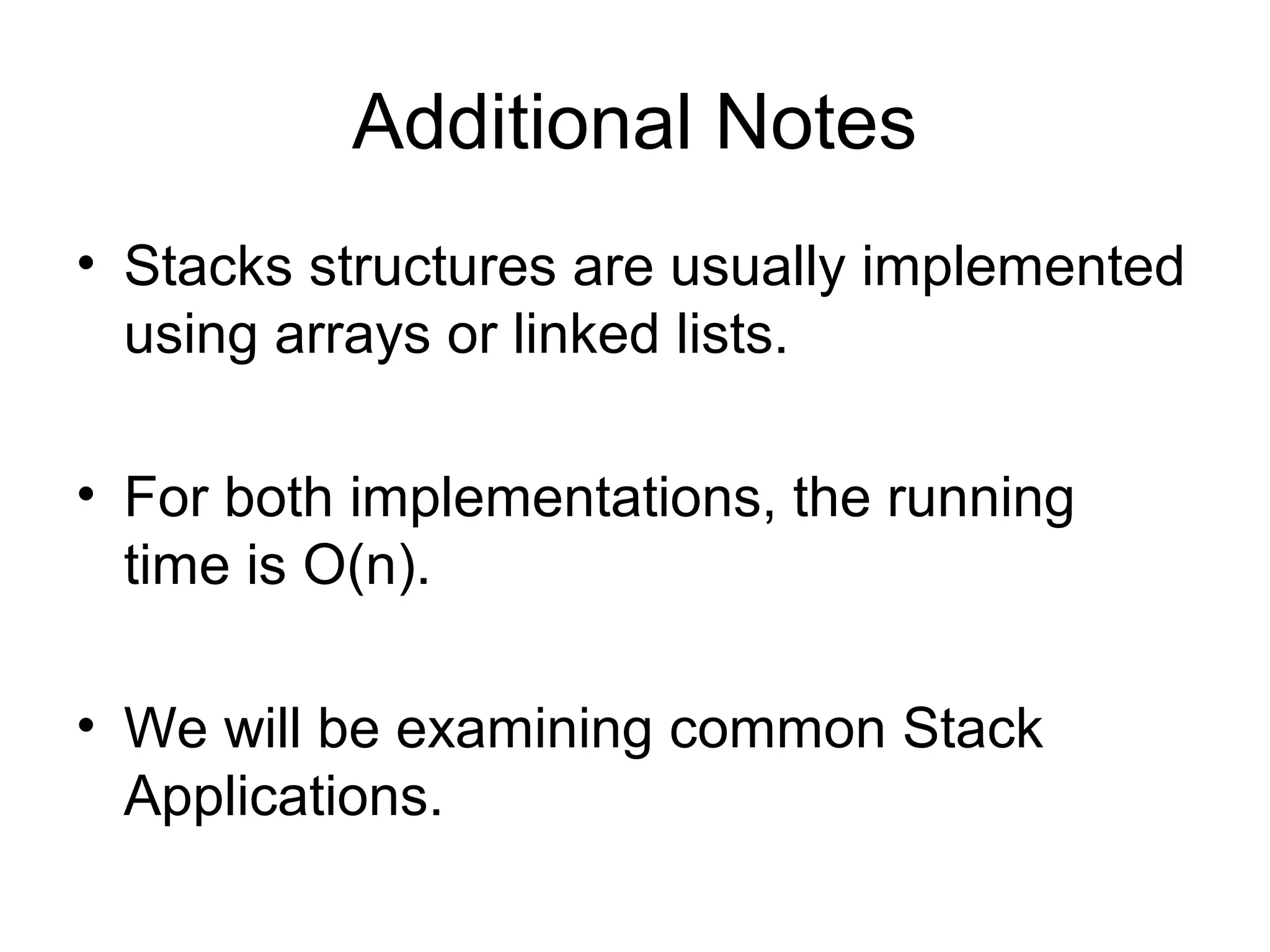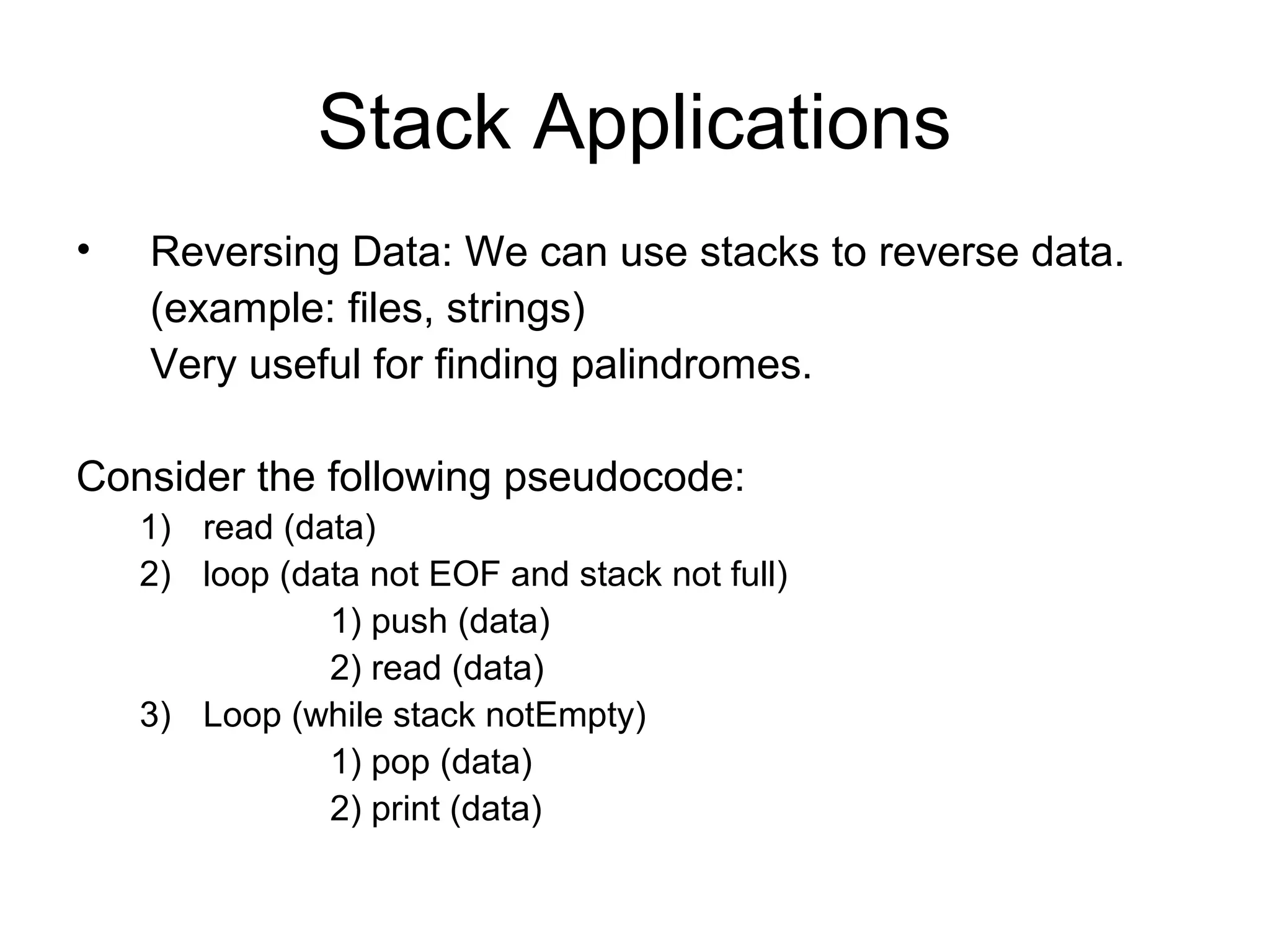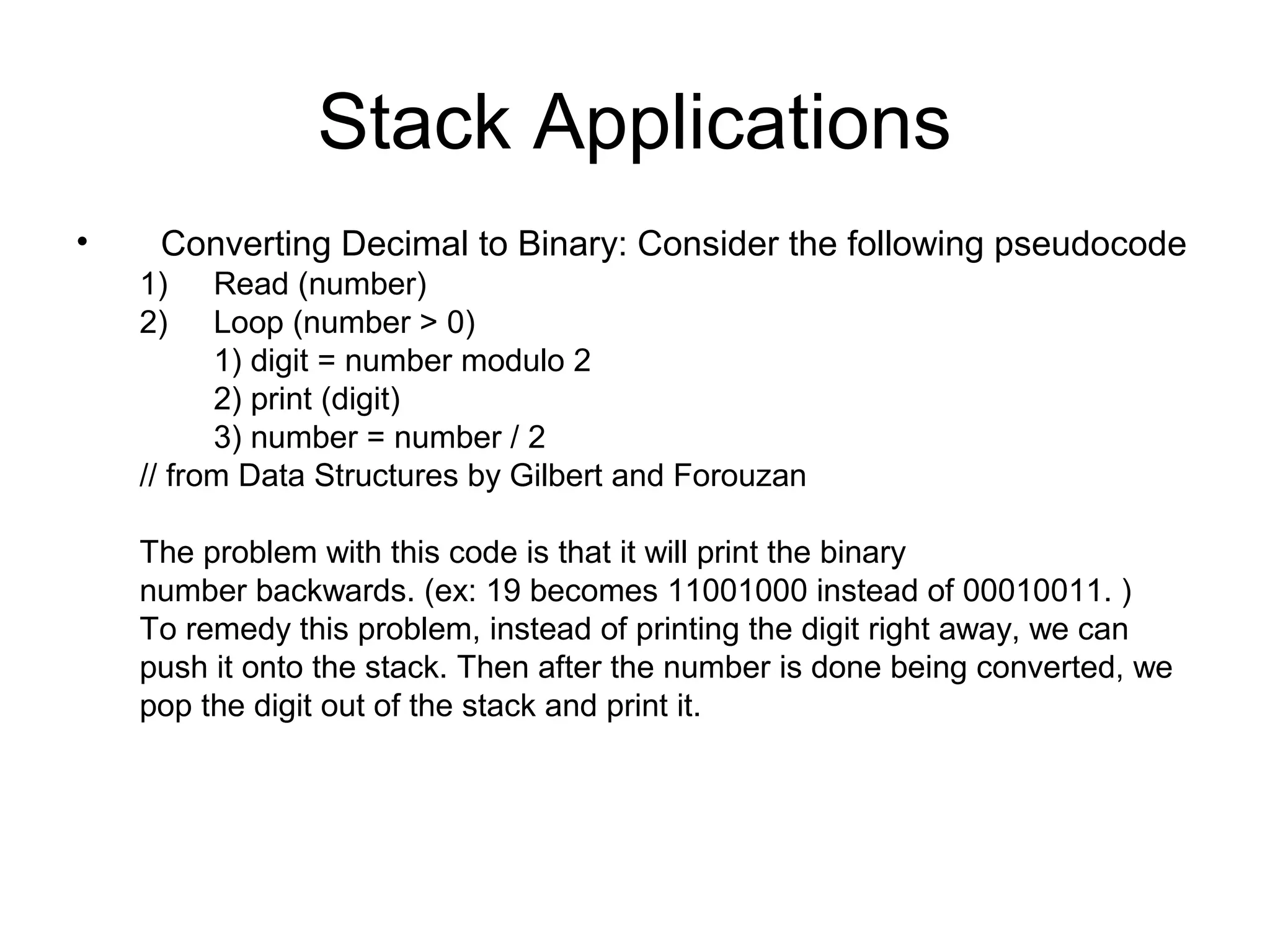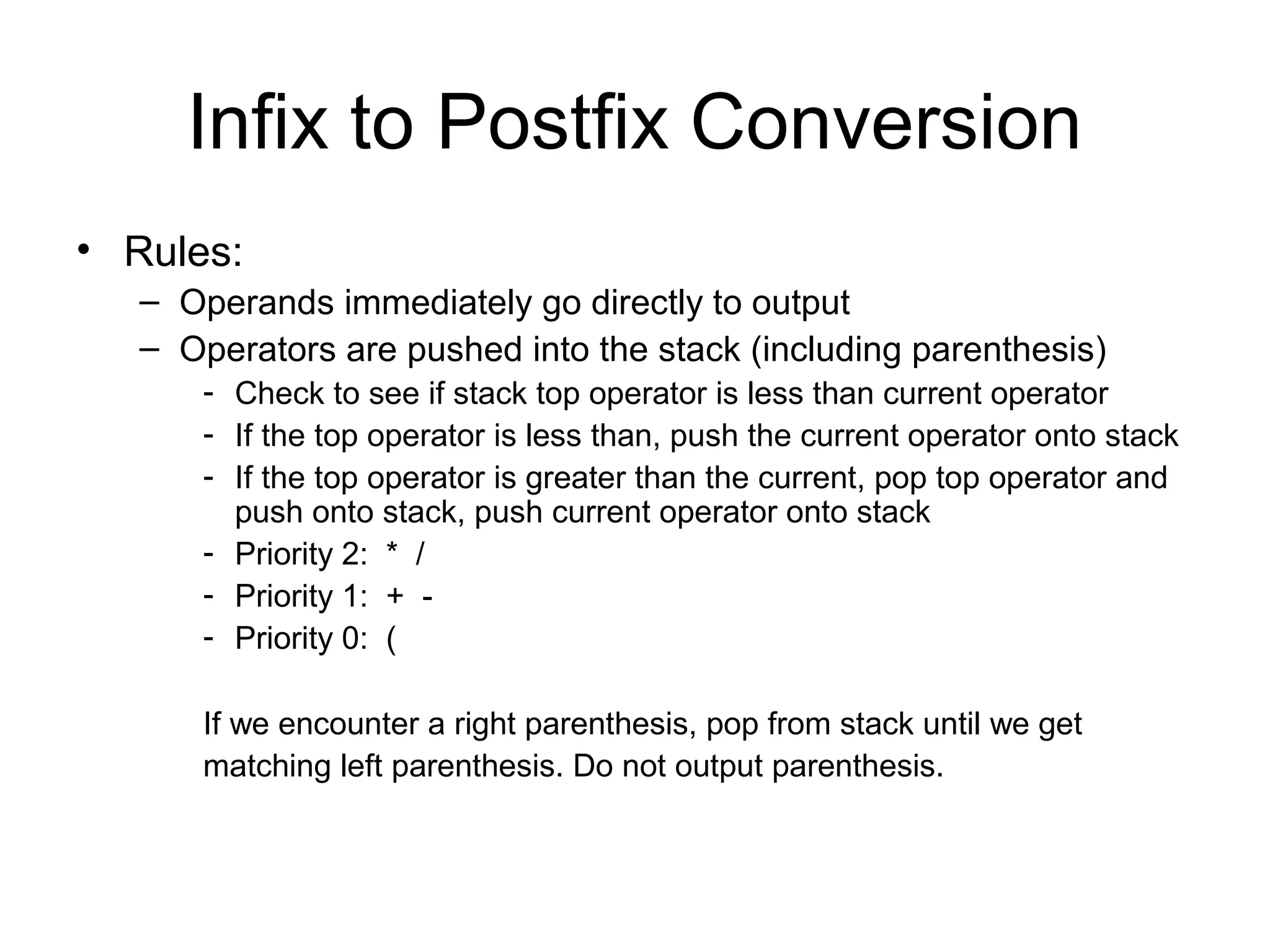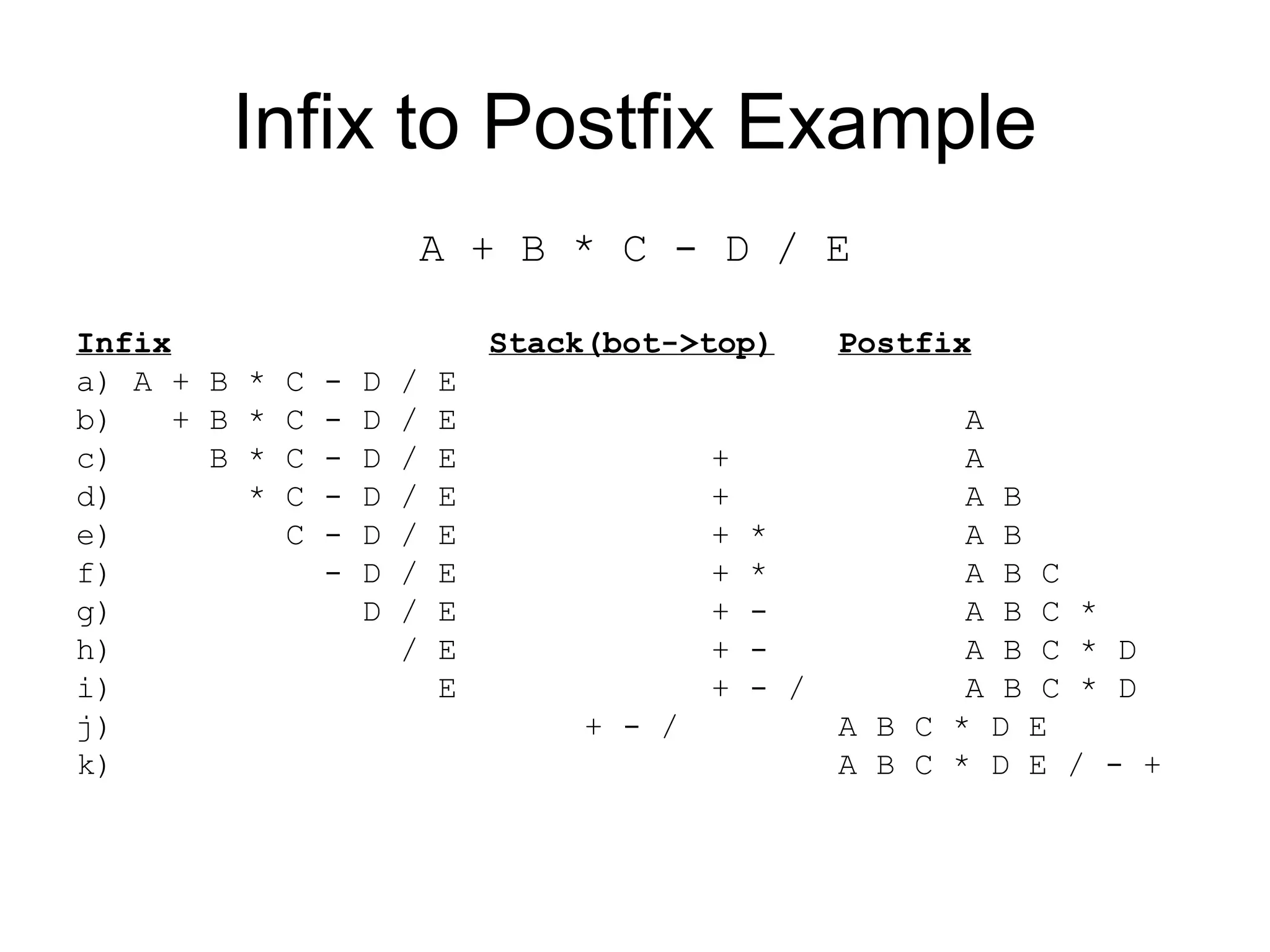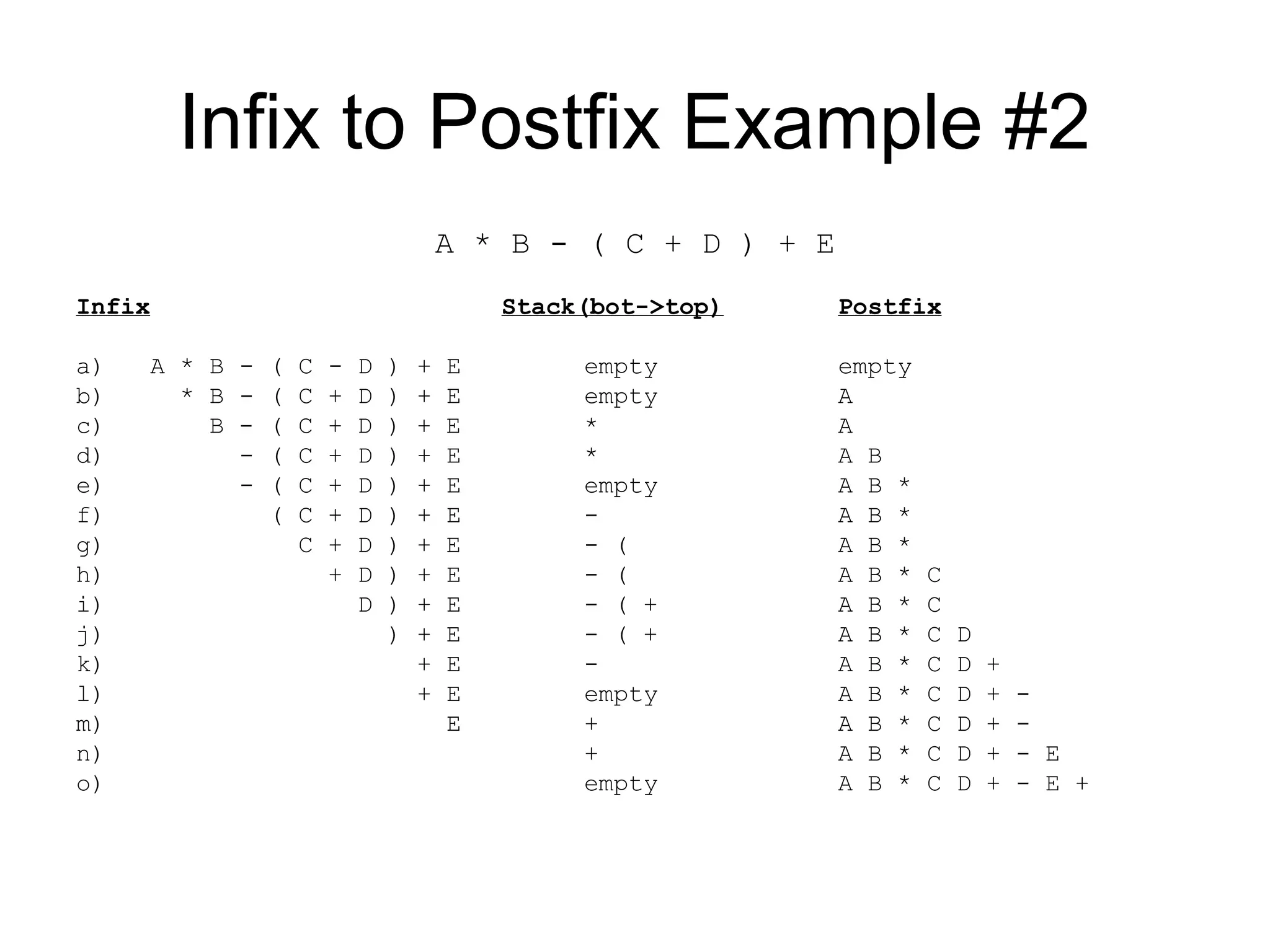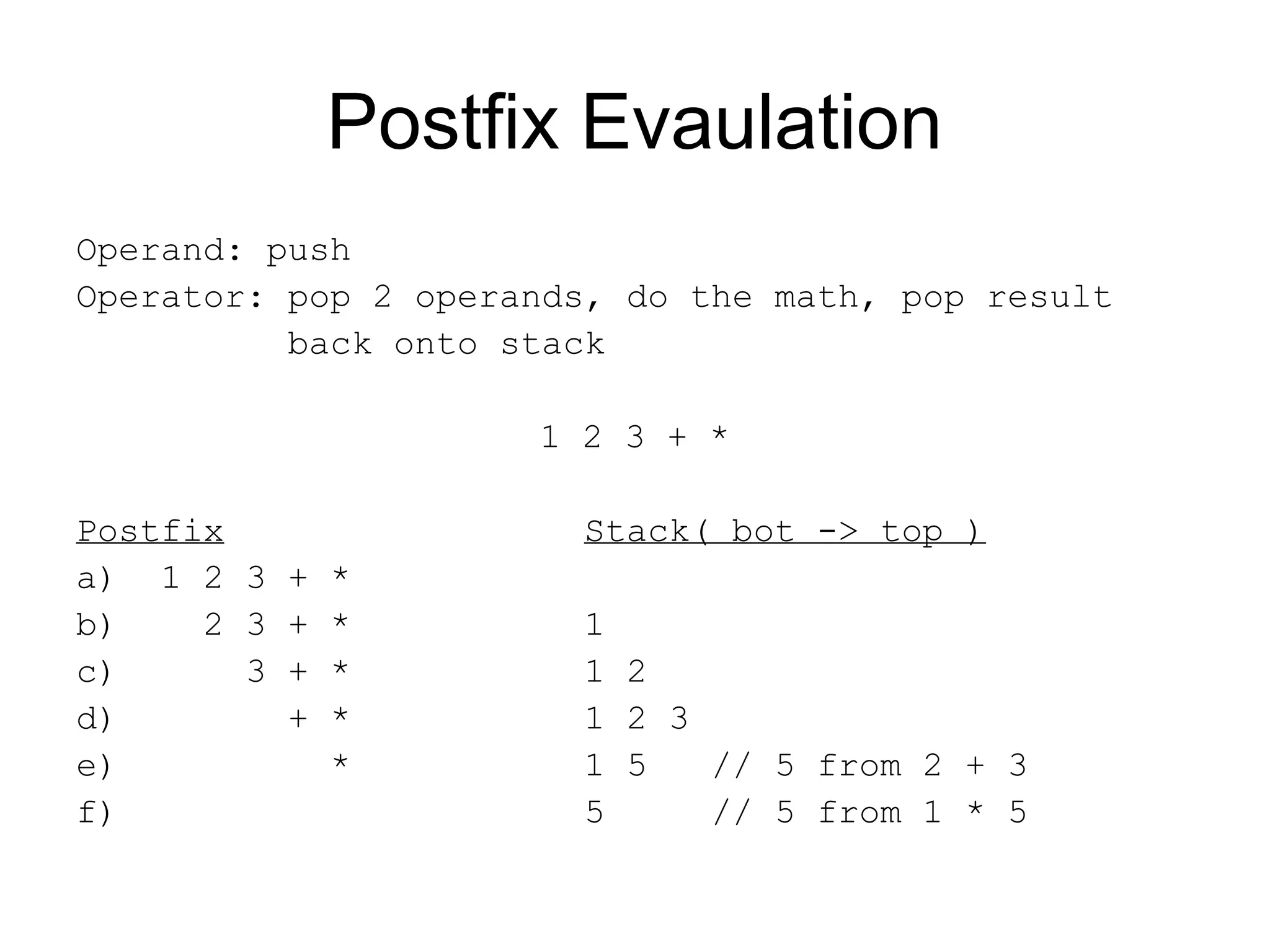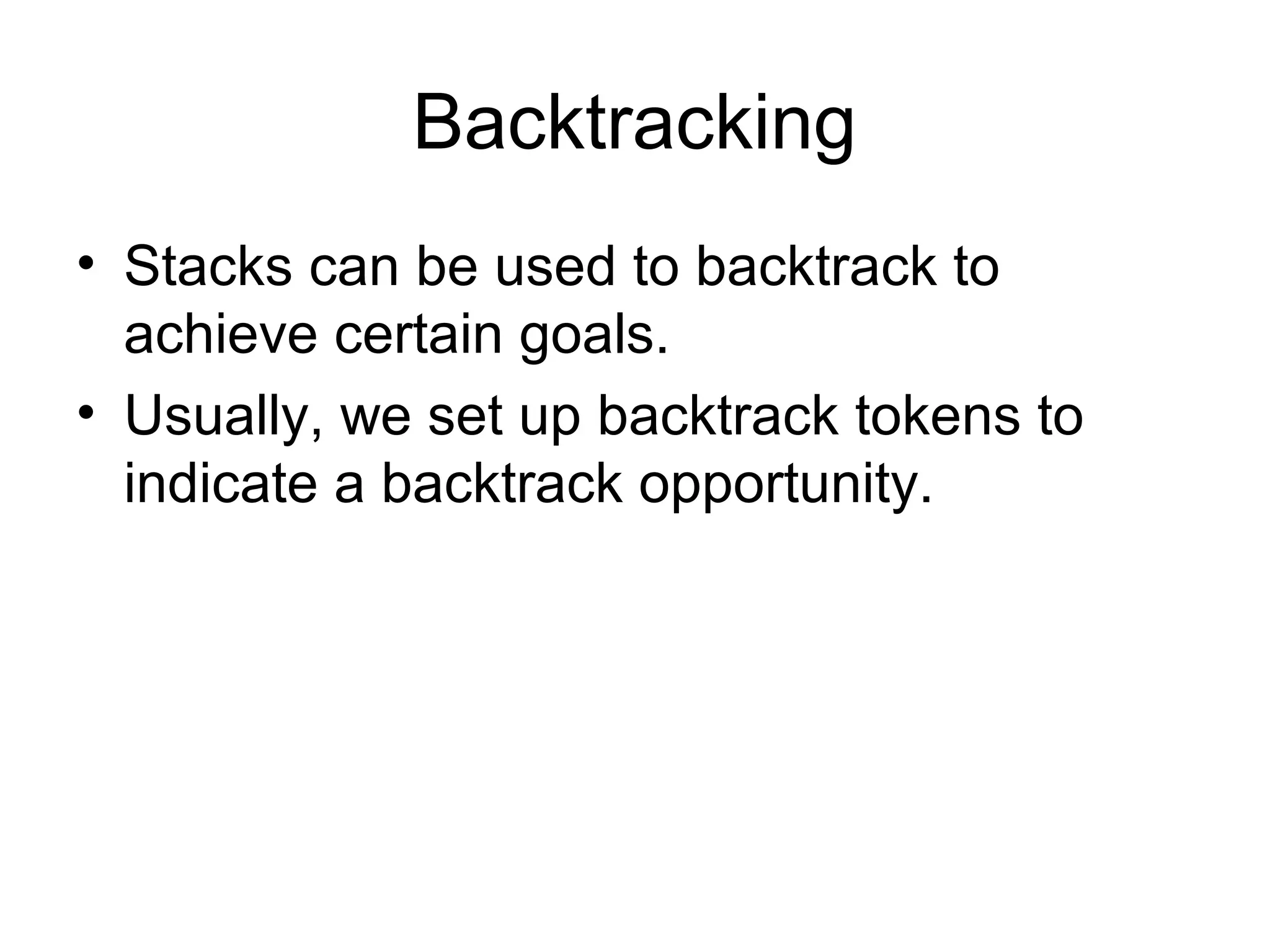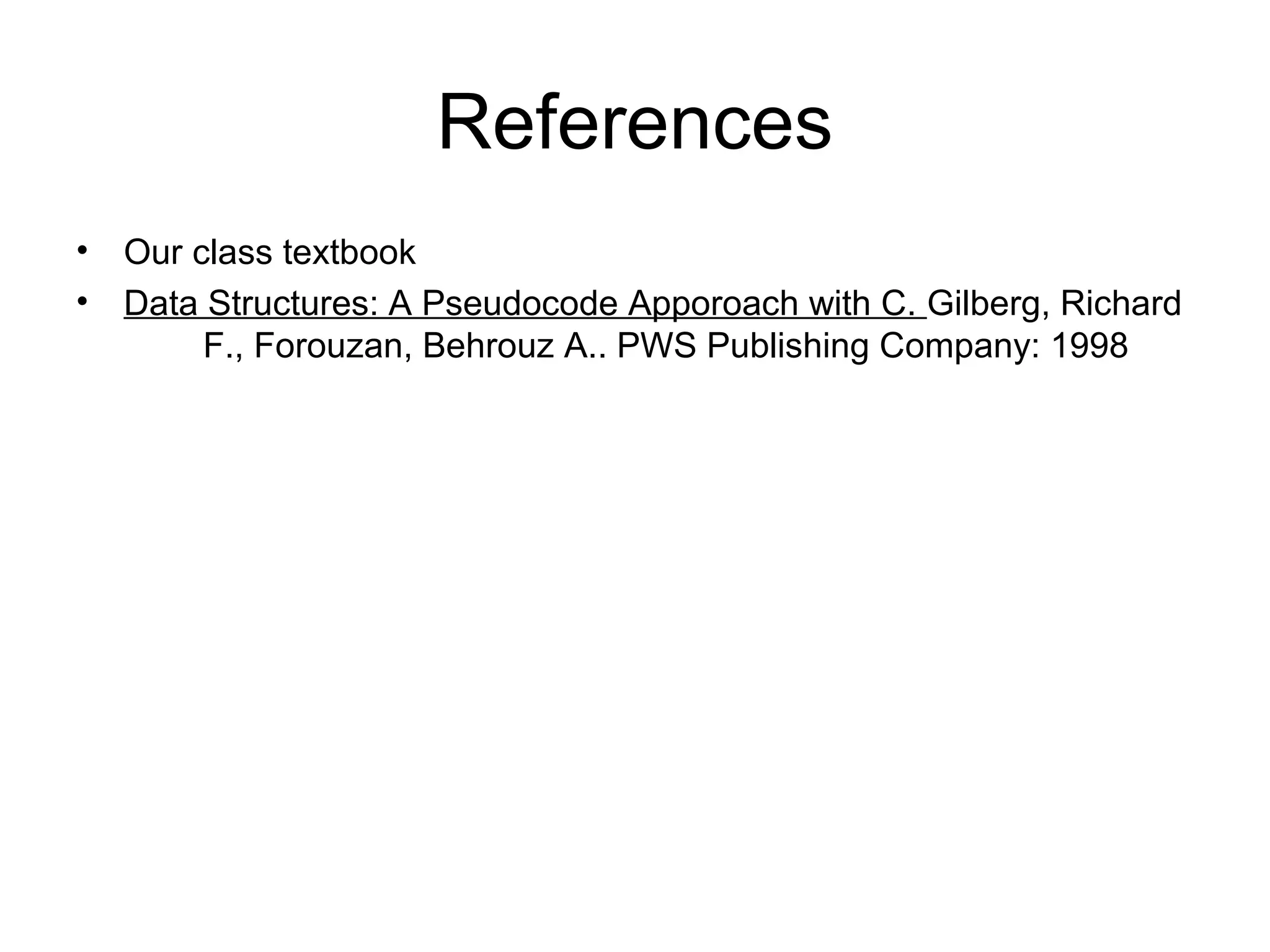This document discusses stack applications and operations. It provides examples of how stacks can be used for reversing data, converting decimal to binary, evaluating arithmetic expressions by converting infix to postfix notation, and backtracking. Basic stack operations include push, pop, and peeking at the top element. Stacks follow LIFO order and are commonly implemented using arrays or linked lists. Common applications include reversing strings or files, evaluating arithmetic expressions, and backtracking to achieve goals.
